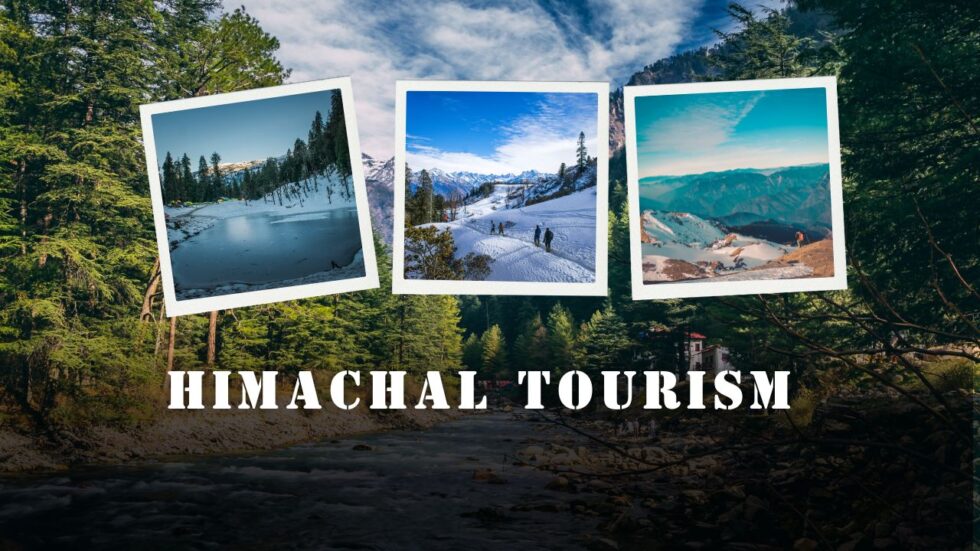
Introduction to Trekking in Himachal
Trekking in Himachal is not just a sport or a vacation plan—it’s a shift in perspective. Nestled in the lap of the western Himalayas, Himachal Pradesh offers a mix of terrains, cultures, and experiences that turn every trail into a story. From alpine meadows to thick pine forests and glacier-fed rivers, the region is a paradise for trekkers who seek raw nature and mountain energy.
Whether you’re a seasoned trekker or someone putting on hiking boots for the first time, Himachal gives you access to untouched routes, village trails, and snow-draped peaks. The state’s geographical variety—from gentle hills to steep ridges—ensures there’s something for every pace and passion.
Why Himachal Is India’s Most Beloved Trekking Region
Himachal Pradesh has been a natural playground for hikers for decades, thanks to its massive range of trails. What makes trekking in Himachal stand out is the constant shift in landscapes and weather within a short distance. A single trek can take you through apple orchards, oak forests, high-altitude deserts, and snowy terrains.
Unlike many other trekking regions in India, Himachal also offers deeper access into rural Himalayan culture. You’ll often share a trail with locals, pass by shepherd huts, and be welcomed into homestays with warm meals and stories of the mountains. From monastic influences in Spiti to the Dhauladhar-backed valleys of Kangra, every area has its own trekking culture.
Popular Treks for Every Kind of Trekker
1. Triund Trek – Perfect for Beginners
If you’re starting your trekking journey, the Triund trek near McLeod Ganj is a gentle introduction. A short but rewarding climb, it takes you through rhododendron forests and opens up to a ridge with views of the snow-capped Dhauladhar range. Despite being relatively short, the views are expansive and make for a satisfying overnight adventure.
2. Hampta Pass – A Trail of Contrasts
The Hampta Pass trek links two dramatically different valleys—lush green Kullu and barren Spiti. The trail includes river crossings, vertical climbs, and even a snowfield or two, depending on the time of year. Trekking in Himachal rarely offers such striking visual changes in one journey.
3. Pin Parvati Pass – For the Brave and Experienced
Not for the faint-hearted, the Pin Parvati Pass trek is one of the more intense and remote trails. Starting from the Parvati Valley and ending in Spiti, the route takes you through dense forests, wide valleys, and finally the icy pass itself at nearly 17,500 ft. This is a true test of endurance and preparation.
4. Bhrigu Lake – A Mythical High-Altitude Escape
A relatively short high-altitude trek, Bhrigu Lake sits at over 14,000 ft and is steeped in mythology. Accessible from Gulaba, near Manali, this trail is perfect for those who want to reach high altitudes within a few days. Meadows, clouds brushing your shoulders, and the mystical lake make it a must-do.
5. Kareri Lake – Peaceful and Less Crowded
Located near Dharamshala, Kareri Lake offers a quieter route compared to Triund. The path passes through charming villages and rhododendron groves, eventually opening up to a glacial lake. It’s ideal for people looking for a serene weekend trek that still has plenty of altitude and beauty.
Offbeat Trails for Curious Trekkers
Trekking in Himachal is not limited to famous names. There are lesser-known routes that offer unmatched solitude and connection with nature.
- Thatharana Trek (Kangra region): A peaceful ridge walk with panoramic views of the Dhauladhar range.
- Shangarh Meadows (Great Himalayan National Park): Ideal for those who prefer forest trails and traditional Himachali architecture.
- Serolsar Lake (Jalori Pass): A scenic day hike through deodar forests leading to a pristine lake guarded by local legends.
These hidden trails are perfect for trekkers who want to go beyond guidebook circuits and into places where tourism has not diluted authenticity.
Best Time for Trekking in Himachal
Timing is key. While the Himalayas are always majestic, the season you pick can completely change your trekking experience.
- Spring (March to May): Rhododendrons bloom, snow begins to melt, and trails become accessible again. Ideal for Triund, Bhrigu Lake, and Kareri Lake.
- Summer (June to July): High-altitude passes like Hampta and Pin Parvati are open. This is peak trekking season.
- Autumn (September to November): Crystal-clear skies and post-monsoon freshness. Great for photographers and those seeking quiet trails.
- Winter (December to February): Snow trekking becomes possible for short routes like Triund and Sethan Dome but requires proper gear and guides.
Avoid the monsoon months (late July to August) as trails become slippery and unpredictable, especially in regions like Kullu and Kangra.
Cultural Touchpoints Along the Trails
Trekking in Himachal isn’t just about natural beauty. As you walk through villages and past ancient paths, you come across temples made of stone and wood, Buddhist monasteries with prayer flags fluttering in the wind, and shepherd families leading flocks of sheep to alpine meadows.
Every valley has its own stories, passed down orally or etched into the walls of sacred places. In Spiti, for instance, the trails often cut through landscapes dotted with centuries-old stupas and mud monasteries. In Kullu and Tirthan, you may be invited into traditional wooden homes for a hot meal and a glass of local apple juice.
Essential Packing List for Himachal Treks
To fully enjoy trekking in Himachal, carrying the right gear is important:
- Sturdy, broken-in trekking shoes
- Thermal layers and waterproof jackets
- UV sunglasses and sunscreen
- Reusable water bottles with purification tablets
- Lightweight backpack (30–50L for short treks, 50–70L for longer ones)
- Trail snacks like energy bars, dry fruits
- First-aid kit with essentials
- ID proof and permits where needed
Many trails require sudden altitude changes, so pack light but smart. Himachal’s weather can change without warning.
Responsible Trekking: A Growing Priority
As the number of trekkers increases, it becomes crucial to maintain the environment and support local communities. Avoid plastic packaging, never leave litter behind, and choose eco-friendly lodging when possible.
Hiring local guides and porters not only gives you better insight into the region but also supports families who live off mountain tourism. Avoid loud music on trails, respect sacred spots, and always ask before photographing people or homes.
Trekking Safety and Local Guidance
Even if you are a regular trekker, the Himalayan terrain demands respect. Weather can shift suddenly, paths may become invisible in fog or snow, and altitude sickness can affect anyone.
Always check local weather updates and hire certified guides for treks that involve glacier crossings or high passes. Himachal Pradesh has several registered trekking agencies in towns like Manali, Dharamshala, and Kullu. It’s wise to carry a physical map or offline GPS as phone networks fade out beyond the last village.
Ending Thoughts: Why Himachal Keeps Calling You Back
No matter how many treks you finish here, the call of the Himalayas doesn’t fade. Trekking in Himachal is more than a hobby—it’s a form of meditation, a reset button for the soul. Each valley speaks a different dialect of beauty, each climb teaches patience, and every summit greets you with silence worth listening to.
From day hikes that refresh your mind to 10-day expeditions that test your limits, Himachal’s trails wait patiently for the next curious footstep. So, if you’re ready to unplug from the usual and follow trails where the air tastes of pine and adventure, the mountains are waiting.









